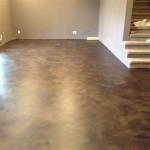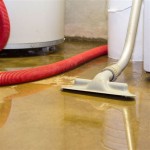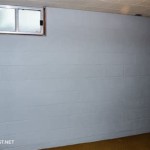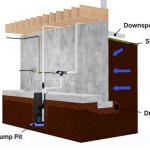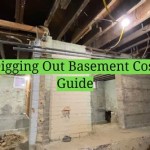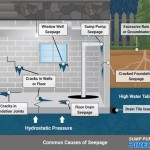How to Get Rid of Mold on Cement Basement Walls
Mold growth in a basement is a common problem due to the damp environment. Dampness, poor ventilation, and leaky pipes can create ideal conditions for mold spores to thrive. Mold on cement basement walls can be unsightly and pose health risks, particularly for those with allergies and respiratory problems. It's crucial to address mold growth promptly and effectively to prevent further damage and health concerns. This article will guide you through the process of removing mold from cement basement walls and preventing future growth.
Identifying the Source of Moisture
Before tackling mold removal, it is essential to identify the source of moisture. Without addressing the underlying cause, the mold will likely return. Conduct a thorough inspection of your basement, paying close attention to the following:
- Leaky pipes: Check for any leaks in plumbing fixtures, pipes, or water heaters. Repair or replace any leaking components promptly.
- Cracked or damaged foundation: Inspect the foundation walls for cracks, gaps, or damage that could allow water to infiltrate. Seal any cracks or gaps using a waterproof sealant.
- Poor drainage: Ensure proper drainage around the foundation to prevent rainwater from pooling and seeping into the basement. Consider installing gutters and downspouts that direct water away from the foundation.
- High humidity: Use a dehumidifier to reduce humidity levels in the basement. Aim for a humidity level between 30% and 50%.
- Ventilation: Ensure adequate ventilation in the basement. Open windows or use fans to circulate air and prevent moisture buildup.
Addressing these issues is crucial to prevent future mold growth. Once the source of moisture is identified and rectified, you can proceed with mold removal.
Cleaning and Removing Mold
Mold removal requires a combination of cleaning and disinfecting methods. Here's a step-by-step guide to remove mold from cement basement walls:
- Safety first: Wear protective gear, including gloves, a mask, and eye protection, to prevent inhaling mold spores.
- Prepare the area: Remove any loose or flaking paint or wallpaper. Cover furniture and belongings in the area with plastic sheeting to protect them from cleaning solutions.
- Clean the mold: Use a stiff-bristled brush or vacuum to remove visible mold growth. Avoid using a broom, as it could spread mold spores. For larger areas, a pressure washer can be helpful.
- Disinfect with a mold-killing solution: Mix a solution of bleach and water (1 part bleach to 10 parts water). Apply the solution to the affected area using a sponge or spray bottle. Let it sit for at least 10 minutes before rinsing thoroughly with clean water. Alternatively, consider using a commercial mold cleaner specifically designed for cement surfaces.
- Dry the area thoroughly: After cleaning and disinfecting, dry the affected area completely with a fan or dehumidifier. Adequate drying is essential to prevent mold regrowth.
For extensive mold growth or difficult-to-reach areas, consider hiring a professional mold remediation specialist. They have the expertise, equipment, and safety protocols to address severe mold infestations effectively.
Preventing Future Mold Growth
After removing mold, it is critical to implement measures to prevent its recurrence. Consider these preventive measures:
- Maintain proper ventilation: Ensure adequate ventilation in the basement to prevent moisture buildup. Open windows or use fans to circulate air.
- Control humidity: Use a dehumidifier to reduce humidity levels to a comfortable range of 30% to 50%.
- Regularly inspect for leaks: Conduct regular inspections of plumbing fixtures, pipes, and water heaters to identify and address any leaks promptly.
- Sealing cracks and gaps: Seal any cracks or gaps in the foundation walls using a waterproof sealant to prevent water infiltration.
- Maintain clean surfaces: Regularly clean basement walls and floors to prevent mold spores from accumulating.
- Address water damage: Deal with any water damage promptly, such as spills or leaks, to prevent mold growth.
By taking these preventive steps, you can create a less hospitable environment for mold and reduce the risk of future infestations.

How To Remove Mold From Basement Walls In 2024

How To Remove Mold From Concrete Cleaning Tips Network

How To Get Rid Of And Prevent Mold Growth On Concrete Environix

How To Get Rid Of And Prevent Mold Growth On Concrete Environix

How To Get Rid Of And Prevent Mold Growth On Concrete Environix

How To Get Rid Of And Prevent Mold Growth On Concrete Environix

How To Remove Mold From Concrete Basement Walls Doityourself Com

How To Remove Mold From Concrete 7 Effective Ways

How To Get Rid Of And Prevent Mold Growth On Concrete Environix

How To Get Rid Of Black Mold In Your Basement Acculevel
